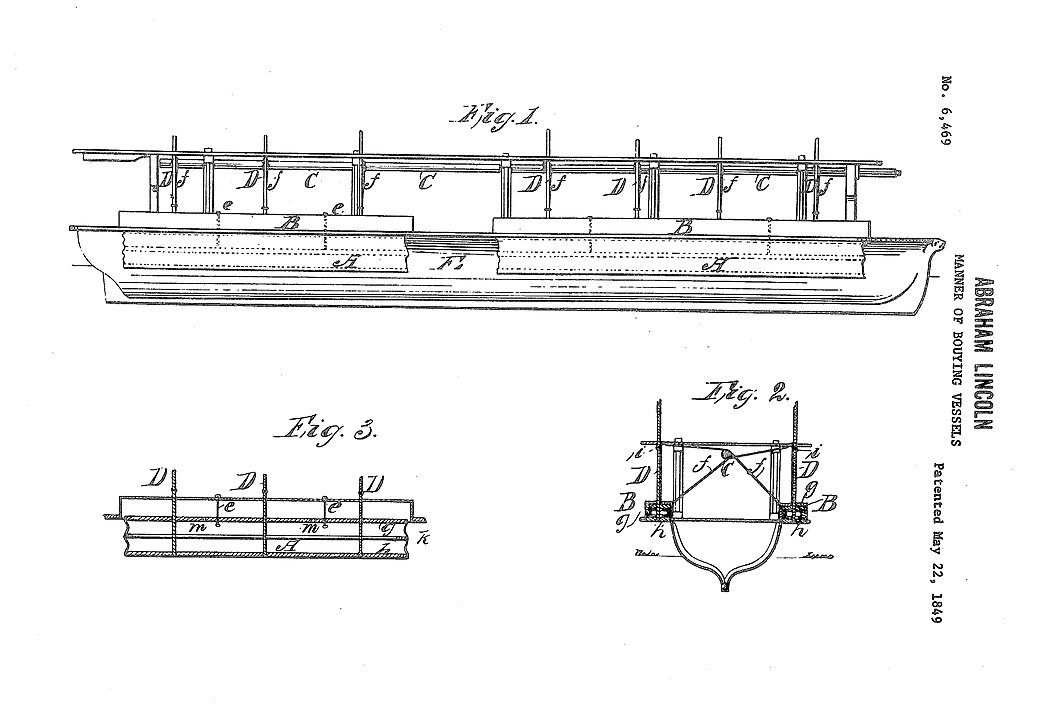Most Americans know Abraham Lincoln as the president who preserved the Union, abolished slavery, and delivered the Gettysburg Address. But few know that he was also an inventor — and the only U.S. president to hold a patent. His inventive spirit was officially recognized in 1849 when he received Patent No. 6,469 for a device designed to lift boats over river obstructions. This little-known fact sheds new light on Lincoln’s intellect, curiosity, and problem-solving mindset.
A Curious and Analytical Mind
Before his presidency, Lincoln spent much of his early career working as a lawyer, legislator, and river traveler in the Midwest. His legal career sharpened his analytical thinking, but his experiences navigating shallow rivers sparked his interest in solving real-world problems.
In the early 19th century, flatboats and steamboats were vital for transporting goods and people, especially along the Mississippi and Ohio Rivers. However, these vessels often got stuck on sandbars or in shallow waters. Lincoln witnessed this firsthand during his river journeys and began to ponder a mechanical solution.
The Invention
Lincoln’s invention was a mechanical device intended to help boats cross shallow water. The patent, titled “Buoying Vessels Over Shoals”, described a system of inflatable bellows or air chambers attached to the sides of a boat. When the vessel approached a shoal or obstruction, the chambers would be inflated to lift the boat higher in the water, allowing it to float over the obstacle. Once clear, the chambers could be deflated and stowed.
The design was ingenious for its time — simple in concept, yet technically forward-thinking. While the device was never manufactured or used commercially, it showed Lincoln’s ability to observe a problem and think creatively about a mechanical solution.
A Hands-On President
Lincoln took the idea seriously enough to have a wooden scale model of the device made, which he submitted with his patent application. That model is now preserved at the Smithsonian Institution’s National Museum of American History, a quiet tribute to Lincoln’s inventive nature.
His engagement with engineering and science didn’t stop there. As president, Lincoln frequently visited the U.S. Patent Office and even signed legislation that strengthened the U.S. patent system. He believed innovation was critical to the nation’s future. “The patent system,” he once said, “added the fuel of interest to the fire of genius.”
The Broader Significance
So why does Lincoln’s patent matter today?
First, it humanizes a monumental figure. We often think of Lincoln as a solemn statesman, but his interest in invention shows a different side — one that’s practical, inquisitive, and imaginative. It reminds us that leaders can (and should) have diverse interests beyond politics.
Second, Lincoln’s patent reflects a uniquely American spirit: the idea that anyone, regardless of background, can innovate. Born in a log cabin with minimal formal education, Lincoln rose to the presidency not only through politics but also through a relentless desire to learn, explore, and improve society. His patent captures that journey perfectly.
Finally, Lincoln’s invention underscores his focus on progress and problem-solving. Whether tackling the challenges of navigating a boat or navigating a nation through civil war, Lincoln approached each issue with thoughtful analysis and a drive to find a practical solution.
The Legacy of Lincoln’s Patent
While the invention itself never made it to market, Lincoln’s patent remains a symbol of innovation, creativity, and the value of thinking outside the box. It also serves as a historical footnote that enriches our understanding of who Abraham Lincoln was — not just a political leader, but also a lifelong learner and experimenter.
Today, students, inventors, and history buffs can view the original model of Lincoln’s patent at the Smithsonian. The actual patent document is publicly accessible through the U.S. Patent and Trademark Office archives. It’s a small but significant piece of American history that links innovation with leadership at the highest level.
What it Tells Us About Lincoln
Abraham Lincoln’s patent might not have revolutionized maritime travel, but it tells us a great deal about the man behind the myth. It reveals a president who wasn’t just content with political debates and constitutional questions — he was also deeply interested in mechanics, science, and how things worked. His invention may be forgotten by many, but it remains a powerful reminder that creativity and leadership are not mutually exclusive. In fact, they may be two sides of the same coin.
